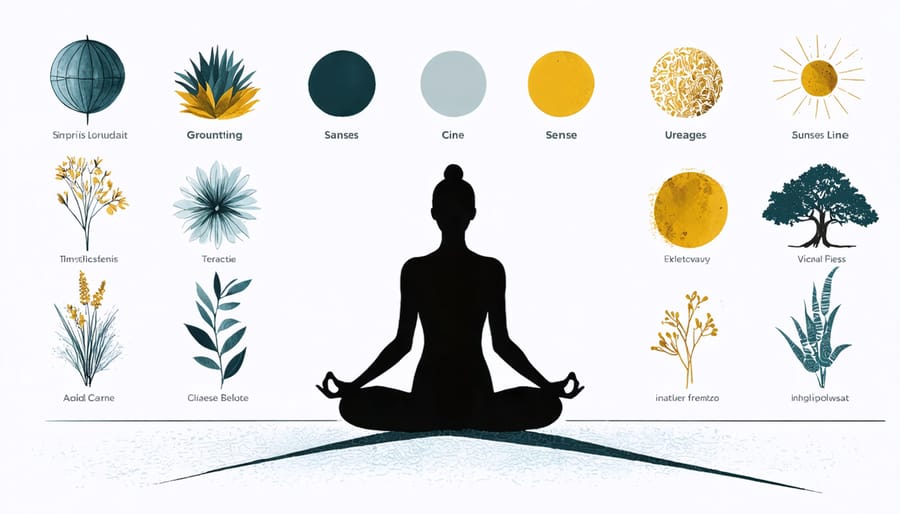
Transform your emotional well-being today with science-backed resilience strategies that go beyond simple self-help advice. In a world where 76% of adults report experiencing daily stress, emotional resilience stands as your greatest asset for navigating life’s challenges with grace and strength. Whether you’re facing workplace pressures, relationship dynamics, or personal transitions, building emotional resilience isn’t just about surviving – it’s about thriving through adversity.
This comprehensive guide unlocks powerful techniques used by psychologists and mental health professionals, now conveniently packaged in downloadable PDF format for your personal growth journey. From rapid-response coping mechanisms to long-term resilience-building practices, you’ll discover actionable tools that seamlessly integrate into your daily routine. Unlike generic stress management advice, these evidence-based strategies are specifically designed to strengthen your emotional core while honoring your unique lifestyle and personal circumstances.
Ready to transform challenges into opportunities for growth? Let’s explore how building emotional resilience can help you create a more balanced, fulfilling life – starting right now with practical exercises you can implement immediately. The journey to unshakeable emotional strength begins with a single, intentional step forward.
Understanding Emotional Resilience Through Mindfulness

The Science Behind Emotional Resilience
Think of your brain as an incredible command center for emotions, constantly working to help you bounce back from life’s challenges. When you experience stress or difficult emotions, your brain’s emotional centers (particularly the amygdala) spring into action, triggering those familiar fight-or-flight responses we all know too well. But here’s the empowering part: through mindful emotion awareness and practice, you can actually strengthen the neural pathways that help you cope better with stress.
Just like building muscle at the gym, emotional resilience grows stronger with consistent practice. When you regularly face and process challenging situations, your brain creates new connections that make it easier to handle future stress. It’s like creating little emotional shortcuts that help you bounce back faster each time.
I love thinking of it as training your inner emotional muscle. Each time you practice self-compassion, maintain perspective during tough times, or choose to learn from setbacks, you’re literally rewiring your brain for greater resilience. This natural ability to adapt and grow stronger is something we all possess – it’s just waiting to be developed through conscious effort and practice.
Mindfulness as Your Daily Strength Builder
Think of mindfulness as your daily emotional workout – it’s not about finding extra hours in your day, but rather infusing presence into moments you already have. Start by turning your morning coffee ritual into a mindful pause; feel the warmth of the cup, inhale the aroma, and take three conscious breaths before your first sip.
During your workday, set gentle reminders on your phone for quick mindfulness check-ins. Take 30 seconds to notice your posture, observe your breathing, or simply feel your feet grounded on the floor. Even washing dishes can become a mindful activity when you focus on the sensation of warm water and the satisfaction of creating cleanliness.
I’ve found that the best mindfulness practice is the one you’ll actually do. For me, it’s taking three mindful breaths while waiting for my computer to start up. My friend Sarah swears by her “mindful walking meetings,” where she combines work calls with conscious steps in nature.
Remember, mindfulness isn’t about emptying your mind – it’s about being present with whatever’s happening, building your resilience one moment at a time.
Simple Yet Powerful Emotional Regulation Techniques
The 5-4-3-2-1 Grounding Method
When anxiety or stress starts to overwhelm you, the 5-4-3-2-1 grounding method can be your go-to technique for finding your center. I discovered this method during a particularly stressful period in my life, and it’s become my emotional anchor ever since.
Here’s how it works: Start by taking a deep breath and naming 5 things you can see around you – maybe it’s your favorite coffee mug or the way sunlight streams through your curtains. Next, identify 4 things you can physically feel, like your soft sweater or the cool breeze on your skin. Then, focus on 3 things you can hear – perhaps birds chirping or the gentle hum of your refrigerator. Notice 2 things you can smell, whether it’s fresh coffee brewing or your morning moisturizer. Finally, name 1 thing you can taste – it could be the lingering mint from your toothpaste.
This simple yet powerful exercise helps bring you back to the present moment by engaging all your senses. It’s particularly effective during those times when your thoughts are racing or you’re feeling disconnected from yourself.

Breathing Exercises for Instant Calm
When life feels overwhelming, your breath can be your most powerful tool for finding instant calm. I discovered these breathing exercises for stress relief during a particularly challenging period in my life, and they’ve become my go-to strategy for emotional regulation.
Start with the 4-7-8 technique: inhale quietly through your nose for 4 counts, hold your breath for 7 counts, then exhale completely through your mouth for 8 counts. This simple pattern helps activate your parasympathetic nervous system, naturally calming your body and mind.
Another effective method is box breathing: imagine tracing a square as you breathe. Inhale for 4 counts, hold for 4, exhale for 4, and hold again for 4. Practice this for just 2-3 minutes whenever you need to center yourself.
For busy moments, try the quick reset breath: take one deep breath in through your nose, filling your belly first, then your chest. Hold briefly, then release slowly through slightly parted lips. Even this single mindful breath can help you regain emotional balance.
Self-Care Rituals That Build Resilience
Building emotional resilience isn’t just about mental exercises – it’s about creating mindful routines that nourish both body and soul. I’ve discovered that incorporating self-care rituals into my daily beauty and wellness routine has been transformative for managing stress and building inner strength.
Start your morning with a gentle facial massage while applying your skincare products. This simple practice helps ground you in the present moment while reducing tension. As you massage, practice positive affirmations or set intentions for the day ahead. I love combining my evening skincare routine with deep breathing exercises – it’s amazing how a few mindful minutes can wash away the day’s stress.
Create a weekly pamper ritual that’s just for you. Whether it’s a relaxing bath with essential oils, a face mask session, or giving yourself a hand massage, use this time to check in with your emotions and practice self-compassion. These moments of intentional self-care build your resilience reservoir, making it easier to handle life’s challenges.
Don’t forget about movement! A morning yoga flow or gentle stretching routine can help release physical tension while creating mental space. Even something as simple as dry brushing before your shower can become a mindful practice that connects you with your body and builds emotional awareness.
Remember, consistency is key. Start small with one or two rituals that resonate with you, and gradually build your self-care practice. These moments of intentional care aren’t just about looking good – they’re about feeling strong, centered, and resilient from the inside out.

Kitchen Therapy: Cooking Your Way to Emotional Balance
Mood-Boosting Recipe Ideas
Did you know that what you eat can significantly impact your mood and emotional resilience? Let’s explore some delicious recipes that not only nourish your body but also support your emotional wellbeing.
Start your day with a Sunshine Smoothie Bowl: blend banana, mango, and orange (rich in mood-boosting vitamin C) with Greek yogurt (containing probiotics for gut-brain health). Top with chia seeds and walnuts for omega-3 fatty acids that support brain function.
For lunch, try the Happiness Bowl: quinoa topped with salmon (rich in mood-stabilizing omega-3s), roasted sweet potatoes (complex carbs for sustained energy), and dark leafy greens. Drizzle with a tahini-lemon dressing for added minerals and healthy fats.
When afternoon cravings hit, reach for Dark Chocolate Energy Bites. Mix dates, raw cacao powder (contains feel-good compounds), and almonds in a food processor. Roll into balls and store in the fridge for an instant mood lift.
End your day with Calming Golden Milk: warm plant-based milk with turmeric, cinnamon, and a touch of honey. These ingredients work together to reduce inflammation and promote relaxation.
Remember, preparing these recipes can be a mindful activity itself. Take time to enjoy the process, breathe in the aromas, and savor each bite. This mindful approach to cooking and eating can enhance the mood-boosting benefits of these nutritious dishes.
Mindful Cooking Practices
Have you ever noticed how the simple act of chopping vegetables can become a soothing ritual? Cooking mindfully isn’t just about preparing meals; it’s a powerful tool for emotional regulation and stress relief. When we approach cooking with intention, it becomes a form of moving meditation that can help build emotional resilience.
Start by creating a calm kitchen environment. Clear your counters, put on some soft music, and take a few deep breaths before beginning. As you cook, engage all your senses – notice the vibrant colors of fresh produce, inhale the aromatic spices, and feel the different textures beneath your fingers. These mindful eating practices extend beyond consumption to the preparation process itself.
I remember how cooking became my sanctuary during a particularly challenging time. The methodical process of following a recipe helped anchor my thoughts when anxiety threatened to overwhelm me. Now, I encourage my community members to view cooking as self-care rather than just another task to complete.
Try focusing on one cooking task at a time – whether it’s the rhythmic motion of kneading dough or the gentle stirring of a simmering soup. When thoughts wander, gently bring your attention back to the present moment and the task at hand. This practice helps develop patience, presence, and emotional awareness – all crucial components of emotional resilience.
Creating Your Personal Resilience Toolkit
Daily Practices for Stronger Emotional Health
Building emotional resilience isn’t just about big transformations – it’s about the small, consistent steps we take each day. I’ve found that incorporating these emotional reset practices into my daily routine has made a remarkable difference in how I handle life’s challenges.
Start your morning with a five-minute gratitude journal, jotting down three things you’re thankful for. This simple practice helps train your brain to notice the positive aspects of your life, even during difficult times. Next, incorporate mindful breathing exercises – try the 4-7-8 technique (inhale for 4 counts, hold for 7, exhale for 8) whenever you feel overwhelmed.
Throughout the day, practice setting healthy boundaries by saying “no” when necessary and expressing your needs clearly. Take regular movement breaks, even if it’s just a quick stretch or walk around your home office. These physical activities help release tension and boost your mood naturally.
Before bed, try the “emotional download” technique: spend 10 minutes writing down any worries or concerns, then deliberately close your notebook, symbolically setting aside these thoughts for the night. Remember, consistency is key – these practices might feel awkward at first, but they become second nature with time, building your emotional resilience muscle day by day.
When to Seek Additional Support
While building emotional resilience is empowering, there are times when seeking additional support isn’t just helpful – it’s essential. Think of it as adding another tool to your self-care toolkit. Just as we don’t hesitate to see a doctor for physical health concerns, reaching out to mental health professionals can be equally important for our emotional wellbeing.
Consider seeking professional support if you notice persistent changes in your sleep patterns, difficulty managing daily tasks, or feeling overwhelmed by emotions that don’t seem to ease with your usual coping strategies. Other signs include withdrawing from loved ones, experiencing sudden mood swings, or finding it challenging to bounce back from setbacks despite your best efforts.
Remember, asking for help isn’t a sign of weakness – it’s actually a powerful demonstration of self-awareness and strength. Many women in our community have shared how working with therapists or counselors helped them develop stronger emotional resilience strategies they couldn’t have discovered on their own.
Professional support can be particularly beneficial during major life transitions, after significant losses, or when dealing with past trauma. If you’re questioning whether you need help, trust your instincts. Many mental health professionals now offer both in-person and virtual sessions, making it easier than ever to access support while maintaining your busy lifestyle.
Don’t wait until you’re in crisis mode – being proactive about your emotional health is just as important as any other aspect of self-care.
As we wrap up our exploration of emotional resilience, remember that building inner strength is a journey, not a destination. Like learning any new skill, developing resilience takes time, practice, and patience with yourself. The tools and strategies we’ve discussed – from mindful breathing to reframing negative thoughts – are your stepping stones toward a more resilient you.
I remember when I first started my own resilience journey, thinking it would be a quick fix. Instead, it became a beautiful process of self-discovery that transformed not just how I handle challenges, but how I celebrate my victories too. You might find, as I did, that some days feel easier than others – and that’s perfectly normal.
Start small. Perhaps begin with a five-minute morning meditation or journal entry. Notice how these tiny steps gradually build your confidence in handling life’s ups and downs. Remember, emotional resilience isn’t about never feeling down; it’s about knowing you have the strength to bounce back.
As you move forward, keep this guide handy as your personal resilience toolkit. Share your journey with friends or join a supportive community – sometimes the simple act of connection can boost our resilience more than we realize. Most importantly, celebrate your progress, no matter how small it might seem.
You’ve already taken the first step by seeking out this information. Trust in your ability to grow stronger, and let each challenge be an opportunity to practice your resilience skills.



